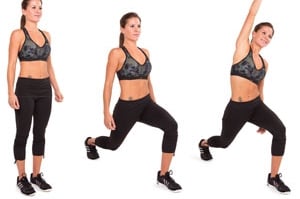
Flexibility is much more important than many of us believe. Here's why it's so crucial for healthy aging, and how you can improve.
When was the last time your fingers said hello to your toes? Canada’s Physical Activity Guide to Healthy Active Living recommends stretching four to seven days per week. Unlike your last visit to the auto mechanic, stretching shouldn’t be painful, and can actually prove beneficial to your mental health.
Stretch your quality of life
It’s no secret: as we age, our muscles and connective tissue lose tone and elasticity, and our joints and skeleton trend toward decreased range of motion.
Despite this message of doom and gloom, it’s important to note that the hunching effects of gravity and the rusting of joints need not shape your golden years. While various degenerative diseases can play a role in shaping your body and quality of life, maintaining and even increasing your flexibility has a plethora of benefits that transcend physical well-being.
Enjoy the bendy-fits
Being more flexible may not save you from your own clumsiness—but if you do slip and fall, it can afford you the extra range of motion necessary to catch yourself before hitting the ground. Regular stretching increases blood flow to muscles as well as red blood cell count, which serves to enhance muscle function. In addition, research has shown that stretching even three times per week and guiding joints through their full range of motion can help prevent conditions such as arthritis and chronic pain.
But wait … there’s more! Along with physical benefits, activities such as stretching and yoga have been shown to be effective methods of treatment for psychological issues including depression, anxiety, stress, and insomnia.
If you’re a gym regular who’s still wondering if stretching is for you, then consider this: the act of lengthening muscle fibres and connective tissues actually increases the potential for long-term strength gains as well as muscle mass.
Be flexible
Stretching is one of the three pillars of physical health. When faced with a time crunch, many people prioritize cardio or resistance training—but flexibility training is every bit as important.
One of the most common inhibitions that personal trainers hear, even from those who do have time to stretch, is that it’s boring. Well, forget this overused excuse. Flexibility training may not be the most exciting part of our exercise routine, but we can easily incorporate stretching into a variety of activities. For example, yoga, tai chi, swimming, and even walking (with good posture) can contribute to increased flexibility for people of all ages and abilities.
Do it right
When stretching, focus on bringing the muscle to a point of slight tension—never to the point of pain. Each stretch should be held for two full, long inhales and exhales, and an average stretching session should last for about 10 minutes.
After you warm up for five to 10 minutes on your favourite piece of cardio equipment, give these body weight exercises a try to strengthen and lengthen muscles, as well as gain flexibility.
Straight Leg Hunch Deadlift

Muscles worked: hamstrings, lower back, calves, neck
Perform 15 repetitions.
- Stand tall with feet hip-width apart and arms at your sides.
- Take a deep breath and let your upper body slowly slump forward, beginning with your head and neck. Keep your knees straight, but maintain relaxed muscle tension.
- Work your way down until you can’t go any farther.
- With your arms dangling in front of you, inhale and exhale once.
- After one more deep inhale, slowly raise your upper body back to starting position, working from your lower back upward. Exhale through the entire movement.
“A” Frame Press-Up

Muscles worked: hamstrings, calves, lower back
Perform 15 repetitions.
- Begin on hands and knees, with your hands situated underneath and slightly in front of your shoulders, and your knees underneath your hips.
- In this relaxed position, inhale and round your lower back, pushing it toward the sky.
- As you exhale, slowly lift your knees off the floor, allowing your back to flatten and straightening your legs as much as possible. Allow your heels to lift off the ground if needed, and only straighten your legs until you feel tension.
- Inhale at this point of tension and then exhale while you slowly lower back to starting position.
Overhead Dowel Squat

Muscles worked: chest, shoulders, glutes, calves, thighs
Perform 15 repetitions.
- Perform this exercise with a broom handle or any long, thin object that’s at least 5 ft (1.5 m) in length and not too heavy. Stand with your feet roughly shoulder-width apart, turned out to about 30 degrees.
- Hold the dowel (broom handle) overhead with straight arms, slightly behind the midline of your body.
- Exhale as you lower into a sitting position, keeping your upper body tall and dowel tracking down the midline of your body.
- Your weight should be in your heels, and your knees should track in the same direction as your toes. Only go as low in the squat as your body will allow before your arms want to fall forward or your heels want to lift.
- Pause and inhale at the bottom of your squat and then exhale as you slowly rise back to starting position.
Tip Keep the dowel above you throughout the entire exercise and try to maintain relaxed neck muscles.
To discover how wide apart to place your hands on the dowel (broom handle), grip it wide, stand tall, and raise your arms up overhead, extending them behind your head. If you can lower your arms behind you to shoulder height, your hands are too close together. They should be placed so that you can raise your arms just above and behind your head while still grasping the dowel, but no lower.
Reverse Lunge and Reach

Muscles worked: abdominals, ribs, upper back
Perform 10 repetitions per side.
- Stand tall with your feet together and arms at your sides.
- Step backward about 3 ft (1 m) with your right foot, keeping weight in your left foot and maintaining a tall upper body.
- As you lower your right knee toward the floor, raise your right arm to the side, eventually reaching high overhead.
- After a deep inhale, slowly lower your arm to starting position and step your right leg back to starting position.
- Alternate legs, completing 10 repetitions per side.
Wall Angels

Muscles worked: shoulders, chest, upper back
Perform 12 repetitions.
- Stand with your back against a wall and your heels roughly 4 in (10 cm) away from it.
- Bend your knees slightly and feel the back of your head and entire back, from spine to neck, touching flush against the wall.
- Making an “L” shape with your elbows, raise arms up to shoulder height, pressing elbows and the backs of your hands against the wall.
- With relaxed muscles, exhale and slowly slide your hands up the wall toward the ceiling. Don’t allow your elbows or the backs of your hands to lift off the wall.
- Once you reach the point where you can go no higher without pulling off the wall, inhale deeply.
- Exhale and slowly slide your hands down the wall until your elbows come back to just below shoulder height.
Which type of stretching is best?
Static stretching as part of a warm-up before activities was once a staple. It was thought to decrease the potential for injury during the activity itself. To clearly define the term, static stretching is when a specific muscular position is held to the point of tension. This type of stretching is usually a solitary act, but it can also be conducted with the help of another individual.
Dynamic stretching may be a more effective warm-up than static stretching, according to recent studies. Dynamic stretching involves moving a limb through a full range of motion, to its end ranges, several times. These stretches are rarely held for longer than a second or two, whereas static stretches are often held for 30 seconds or more.
Pre-contraction stretching can be performed following an activity in order to gain maximum flexibility. This involves a contraction of the muscle immediately before it is stretched. Although pre-contraction stretching can be done by an individual, the most common method, proprioceptive neuromuscular facilitation, is performed by a partner.





